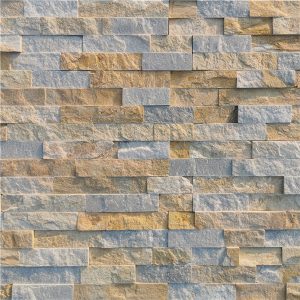Introduction
In the world of home design and architecture, the use of stone has always been highly prized for its durability, timeless beauty, and natural appeal. However, natural stone can be expensive, heavy, and difficult to work with. This is where cultured stone comes in as a versatile and cost-effective alternative that offers the same aesthetic benefits as natural stone. Cultured stone, also known as manufactured or faux stone, is made from a mixture of cement, aggregates, and iron oxides to replicate the look and feel of natural stone. In recent years, cultured stone accents have become increasingly popular in home design for their ability to add texture, warmth, and character to any space. In this article, we will explore the various ways in which cultured stone can be used to enhance the beauty and value of your home.
History and Evolution of Cultured Stone
The concept of cultured stone dates back to the 1950s when it was first introduced as a lightweight and cost-effective alternative to natural stone. Over the years, advancements in technology and manufacturing processes have led to the development of highly realistic cultured stone products that closely mimic the look and texture of natural stone. Today, cultured stone is available in a wide range of colors, shapes, and sizes, making it a versatile option for both interior and exterior applications.
Benefits of Cultured Stone Accents
There are several benefits to incorporating cultured stone accents into your home design. One of the primary advantages of cultured stone is its affordability compared to natural stone. Cultured stone is a more cost-effective option that allows homeowners to achieve the look of natural stone without breaking the bank. Additionally, cultured stone is lightweight and easy to install, making it a practical choice for DIY projects or quick home renovations. Cultured stone is also highly durable and requires minimal maintenance, making it a long-lasting and practical choice for both indoor and outdoor applications.
Versatility of Cultured Stone Accents
Cultured stone can be used in a variety of ways to enhance the aesthetic appeal of your home. One popular application of cultured stone is as an accent wall in interior spaces. Cultured stone accent walls can add depth, texture, and visual interest to any room, creating a focal point that draws the eye and adds warmth to the space. Cultured stone can also be used to create fireplace surrounds, kitchen backsplashes, and bathroom accents, adding a touch of elegance and sophistication to these areas. In outdoor spaces, cultured stone can be used to create stunning façades, patios, walkways, and landscaping features that enhance the curb appeal of your home.
Design Trends with Cultured Stone Accents
As the popularity of cultured stone continues to grow, new design trends are emerging that showcase the versatility and beauty of this material. One popular trend is the use of mixed materials, where cultured stone is combined with other materials such as wood, metal, or glass to create a modern and eclectic look. Another trend is the use of textured and irregularly shaped cultured stone pieces to create a rustic and natural aesthetic. Additionally, the use of cultured stone in bold colors or patterns is gaining popularity as a way to make a statement and add a touch of drama to a space.
Installation and Maintenance of Cultured Stone Accents

When it comes to installing cultured stone accents, it is important to follow the manufacturer's guidelines and recommendations to ensure a safe and secure installation. Cultured stone can be installed using a variety of methods, including mortar, adhesive, or a mechanical fastening system, depending on the specific application and requirements. Proper installation is essential to ensuring the longevity and durability of the cultured stone accents in your home.
In more.. of maintenance, cultured stone is relatively low maintenance compared to natural stone. Regular cleaning with a mild detergent and water is usually sufficient to keep cultured stone looking its best. However, it is important to avoid harsh chemicals or abrasive cleaners that can damage the surface of the cultured stone. Additionally, sealing the cultured stone periodically can help protect it from stains, moisture, and fading, ensuring that it retains its beauty and luster for years to come.
Conclusion
Cultured stone accents offer a cost-effective and versatile way to enhance the beauty and value of your home. With a wide range of colors, shapes, and sizes available, cultured stone can be used in a variety of applications to create stunning and unique design elements that add texture, warmth, and character to any space. Whether used indoors or outdoors, cultured stone accents can transform your home into a stylish and sophisticated sanctuary that reflects your personal style and taste. By exploring the various design trends, installation methods, and maintenance tips for cultured stone, you can unlock the full potential of this versatile material and create a home that is truly one-of-a-kind.
